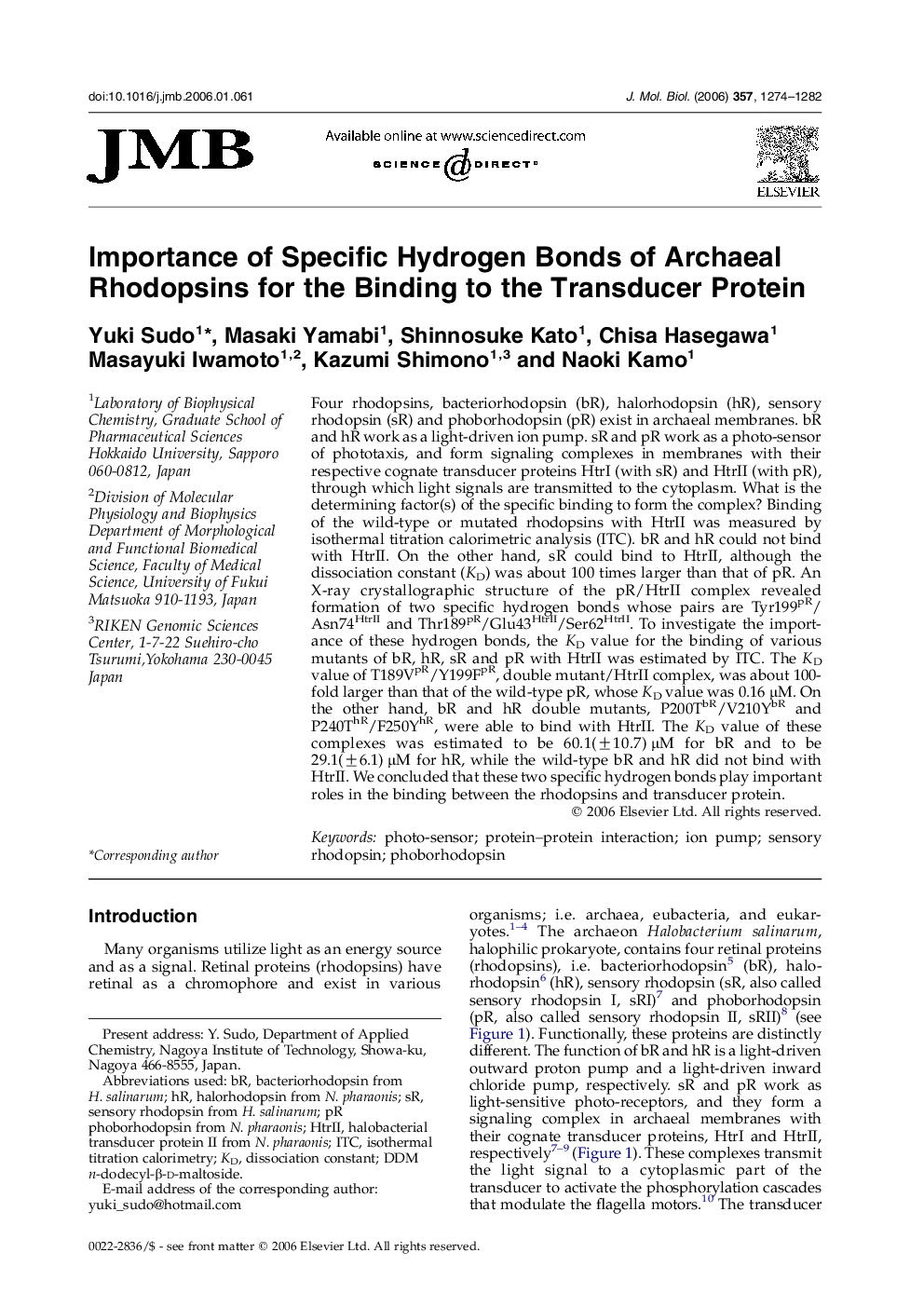| Article ID | Journal | Published Year | Pages | File Type |
|---|---|---|---|---|
| 2189950 | Journal of Molecular Biology | 2006 | 9 Pages |
Four rhodopsins, bacteriorhodopsin (bR), halorhodopsin (hR), sensory rhodopsin (sR) and phoborhodopsin (pR) exist in archaeal membranes. bR and hR work as a light-driven ion pump. sR and pR work as a photo-sensor of phototaxis, and form signaling complexes in membranes with their respective cognate transducer proteins HtrI (with sR) and HtrII (with pR), through which light signals are transmitted to the cytoplasm. What is the determining factor(s) of the specific binding to form the complex? Binding of the wild-type or mutated rhodopsins with HtrII was measured by isothermal titration calorimetric analysis (ITC). bR and hR could not bind with HtrII. On the other hand, sR could bind to HtrII, although the dissociation constant (KD) was about 100 times larger than that of pR. An X-ray crystallographic structure of the pR/HtrII complex revealed formation of two specific hydrogen bonds whose pairs are Tyr199pR/Asn74HtrII and Thr189pR/Glu43HtrII/Ser62HtrII. To investigate the importance of these hydrogen bonds, the KD value for the binding of various mutants of bR, hR, sR and pR with HtrII was estimated by ITC. The KD value of T189VpR/Y199FpR, double mutant/HtrII complex, was about 100-fold larger than that of the wild-type pR, whose KD value was 0.16 μM. On the other hand, bR and hR double mutants, P200TbR/V210YbR and P240ThR/F250YhR, were able to bind with HtrII. The KD value of these complexes was estimated to be 60.1(±10.7) μM for bR and to be 29.1(±6.1) μM for hR, while the wild-type bR and hR did not bind with HtrII. We concluded that these two specific hydrogen bonds play important roles in the binding between the rhodopsins and transducer protein.
